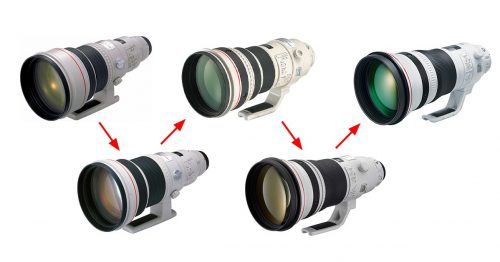Nikon Canada just loaned me their 300mm f/2.8 VRII for testing. I’ll be sharing my full thoughts and sample images in a forthcoming review, but wanted to give readers a sense of the hands-on experience with the lens right away.
Released back in 2009, the VRII model of Nikon’s professional workhorse sports and wildlife lens was a relatively minor update to the first 300mm Nikon prime with VR, released in 2004. Besides the VR update and addition of an auto/manual (A/M) focus mode, the optical design, weight and other features are all identical.
These lenses have long been considered the gold standard for telephoto sharpness and autofocus speed in Nikon’s universe. The first autofocusing Nikon 300mm f/2.8 dates back to 1986, while manual variants were first produced in the early 1970s. The current 11 lens elements in 8 groups layout has been used since 1996, nearly a quarter of a century ago.
To say these lenses are iconic in the photographic world is an understatement, but just like other legendary optics, this one costs just a bit more than most non-professionals would be willing to pay. At $7,199 CAD, the main audience for this lens consists of working pros or financially comfortable amateurs who want or need the absolute best.
While deploying all of Nikon’s modern technology like vibration reduction (VR), Nano-crystal coating (N) and extra-low dispersion (ED) lens elements, this lens still feels like a behemoth and a blast from the past in many ways. It may be technically hand-holdable, especially thanks to the VR, but its 6.4 lbs of heft make doing so an ‘interesting’ proposition for any amount of time.
Some may want to add a grip to their camera body to help with the overall balance, but personally, I’d rather have a somewhat lighter overall package rather than adding even more weight to the equation. Either way, for any prolonged assignments or field trips, I would recommend at least a monopod (my preference) or a tripod with a gimbal head – which is ideal in many ways, but again adds bulk and complexity to what you have to carry.
This discussion of how to handle a challenging lens reminds me of the classic advice legend Joe McNally provides in his 2008 YouTube video on “Da Grip”. Yes, kids, YouTube was a thing way back in 2008. Seriously, watch this one and your hand-holding skills with almost any lens will improve instantly.
Got it? Good. ‘Da Grip’ is one of the only reasons I’m able to take a lens like the 300mm f/2.8 VRII and use it as a walkabout lens on hikes or assignments. It might not look much bigger than your typical 70-200mm lens when the massive carbon fibre lens hood is removed (see below), but its solid all-metal barrel and massive glass elements make it a different beast altogether when it comes to handling.
Note the drop-in filter holder near the lens mount as well. The front element on most super-telephoto lenses are far too massive to accept any typical screw-on filters, so it’s a bonus that this lens can take 52mm drop-in filter, something my go-to Nikon 200-500mm f/5.6 (review link) can’t do.
The 200-500mm has been my primary telephoto lens for a while now, and with its attractive $1,799 CAD price-point, I know it’s a popular choice among other professionals and amateurs alike. I found it interesting that the 300mm f/2.8 VRII is extremely close in overall dimensions with the lens hood attached, and even shorter when the hood is reversed. If you have a bag that holds your 200-500mm, it’s a safe bet that it should hold your 300mm f/2.8 just as well.
That being said, dropping four times the money on a lens and switching from zoom to prime optical design should bring with it certain unmistakable advantages. With my full review on the way, I’ll be taking more time to explore just what those expected advantages are, and whether or not I felt they made themselves apparent during my time with the lens. Stay tuned!













